Published on Friday, 24 Aug, 2018
Learning Japanese
Since the beginning of this year I've been taking my Japanese learning a lot more seriously. Having been asked about it by quite a few people, this post is intended to summarise my journey so far.
My starting point(s)
I first started to ‘learn’ Japanese in 2008 before my first trip, but that consisted of buying a phrasebook and copying a things into my omni-present notebook (these were the dark days before Google Translate). I learnt how to parrot a bit, but once I got back home everything stopped. My next visit was 2010, and at that point I got a CD to listen to in my car as I was doing a ton of driving. My focus was again on speaking and there was more parroting of isolated phrases, but I didn’t even look at the book that came with the CD. My vocab did improve very slightly but it again tailed off again after my holiday. We had a bit of a gap in our visits, and as such everything then became fully dormant again.
I only started to consider taking the language more seriously in around 2016, when I bought my first textbook and learnt hiragana and katakana, again prompted by another trip and wanting to be able to read and interact more. However I didn’t build my studies into my life at all, and the textbook remained largely unused. Whilst it was exciting to be able to identify characters whilst out there, my grammar and vocab were really lacking and hit a wall whenever any conversations went ‘off-script’ from the safe interactions that I was used to.
Every time I’d visit, I’d learn a bit more - whether that was trying to pick out common kanji like 入り口 or 出口, being able to recite the phrase the trains use to warn about closing doors, working out how the number system worked from lifts announcing floors, absorbing little bits of cultural usage (my CD had taught me “domo arigato”, but nobody ever said exactly that to me in day-to-day interactions), or becoming interested in nuance (I remember looking up why some people would say arigatougozaimashita rather than gozaimasu). But I had no structure, and no real goals.
After we spent quite a lot of time in Japan for our honeymoon last year, my attitude changed for good. We came back and rapidly booked another trip for January, and I decided that I needed a proper framework. My textbook reappeared from dormancy, and I made a new year’s resolution to sign up for the Japanese-Language Proficiency Test (JLPT), which is a worldwide exam to evaluate and certify Japanese language proficiency for non-native speakers. I’ve been studying daily ever since.
I decided to start properly from the beginning, and took the N5 (lowest - N1 is highest) exam in London at the start of July. I got my results this week, and passed with As in all of the graded sections. A few people have expressed interest in how I’ve been learning, so in the rest of this post I’ll give some tips around what I’d do if I did it all again.
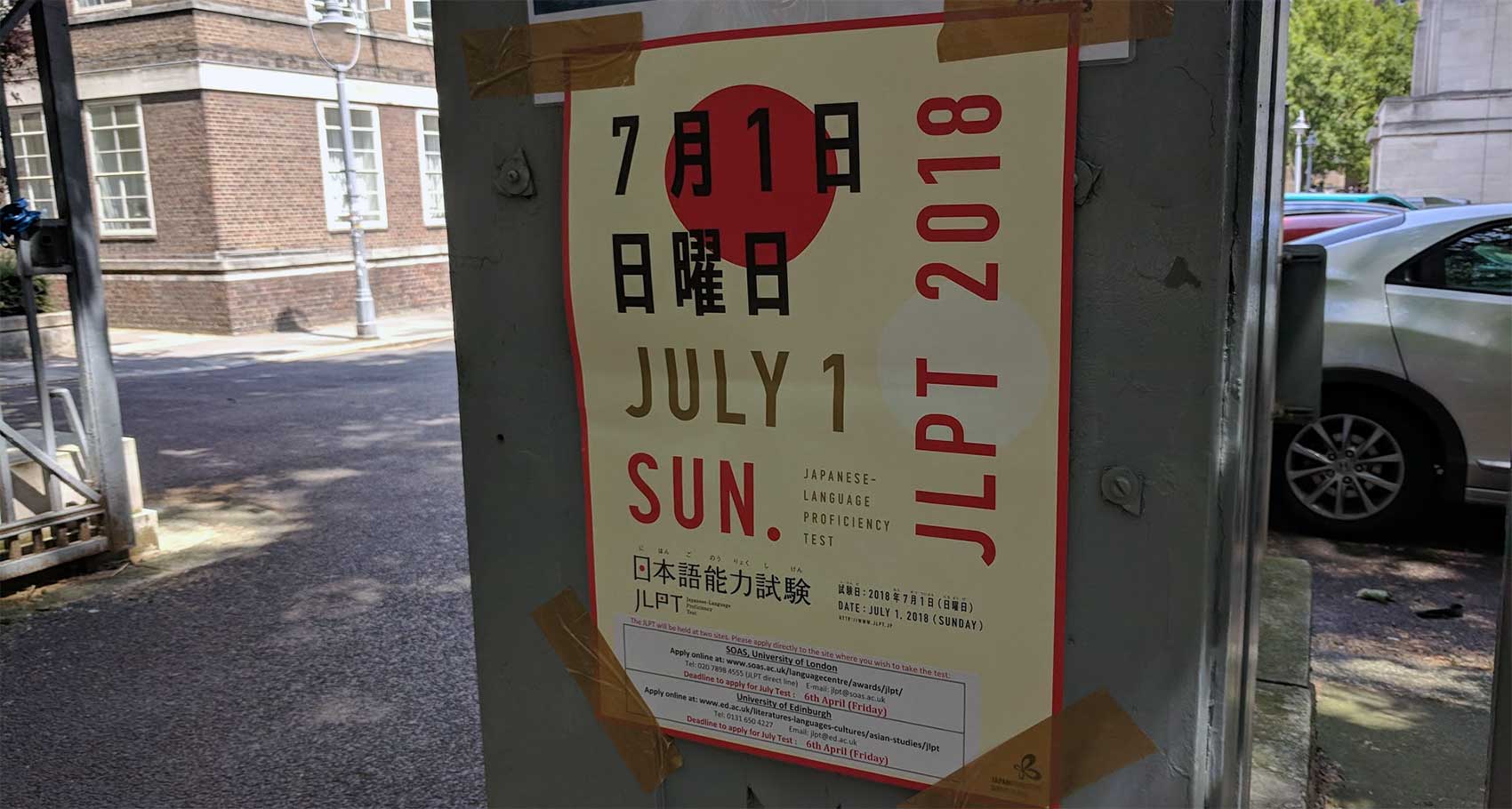
Why are you doing this?
I’ve come to understand that the most important thing is to have a reason behind what you’re doing. For me, it has always been to be able to go to more remote places, and to speak more genuinely to people. I love Japan, and it’s all about interactions for me. For others it’s about being able to consume native media like anime or manga. Keep your reasons in mind, because it may influence the areas you focus on as well as letting you set appropriate goals.
The building blocks
With any language there are different areas, and commonly you’ll come across speaking, listening, reading and writing. Speaking and writing - activities that require recall - are usually the hardest bits for most people. Spanning all of the disciplines are vocabulary (words and meaning) and grammar (how to string those words together without sounding like an idiot).
In Japanese, as a native English speaker you have the additional complexity of understanding the writing systems as well. In short, you need to learn hiragana (ひらがな, rounded characters, Japan’s version of the alphabet), katakana (カタカナ, more angular, used for loanwords), and kanji (漢字, a system of Japanese writing using Chinese characters, used primarily for content words).
Phew, that seems like a lot eh? It’s actually not, but this is where the structure comes in useful. Working to a rough syllabus (there’s no official, definitive list) for the exam helped me to pin down how much I should know in each area.
Starting with kana
But where to start? For me, if you want to start getting serious the best place is with hiragana, closely followed by katakana.
Many textbooks and online resources will show you ‘romanised’ versions of Japanese: rōmaji, that is using english characters to spell out the Japanese words. This makes it more accessible if you haven’t learnt the characters, but it also introduces a massive problem: our alphabet and sounds don’t map very well! “Rōmaji” itself is a good example of this - many people end up writing it as “romanji”, “romaji”, or “roumaji”. Likewise, you probably know “konichiwa!” - literally converted over, this is actually written “konnichiha”. You can absolutely get by, but if you want to learn it removes so much ambiguity by ensuring that you’re reading and writing words as they were intended.
I tried all kinds of apps and things for this, but the thing that made it stick was the Tofugu hiragana and katakana mneumonic approaches. As a slight aside, Tofugu are an amazing resource, and you’ll see them mentioned a lot here. They have my eternal gratitude and love 💕
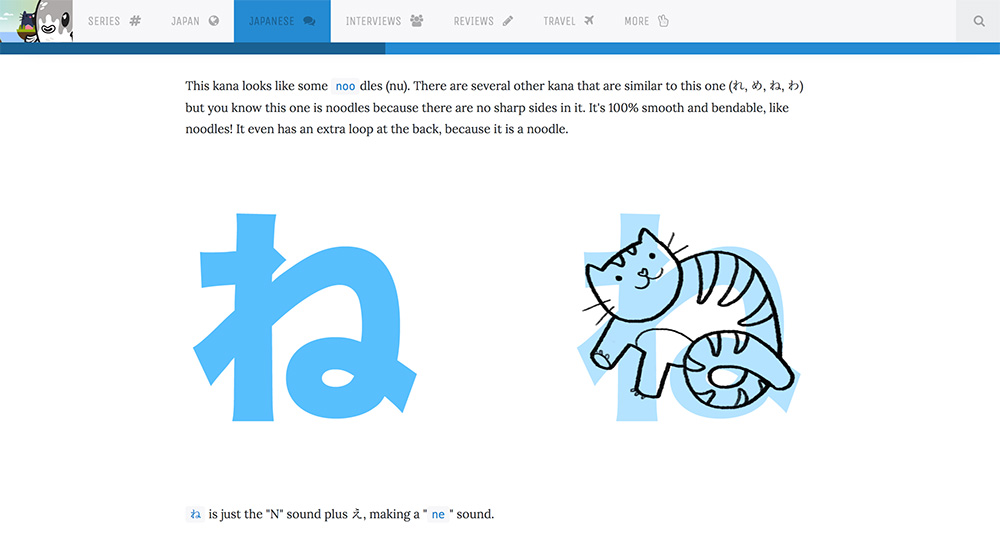
Online vs offline tools
I recently had a message from someone saying that they were struggling to find good online tools to learn from. My reply was that personally, with the exception of Tofugu’s tools, I’ve generally found that most online apps/websites are bad for learning and teaching but good for revision and practice. Let’s go through both.
Offline
Textbooks
Despite my ridiculous textbook procrastination for a year, I’d really strongly recommend getting a physical book that has an element of workbook built into it to help you learn grammar. I won’t get too much into comparing the different options available, because hey, there’s a Tofugu article for that! What I will do is share my experiences.
Here’s my current collection of textbooks.
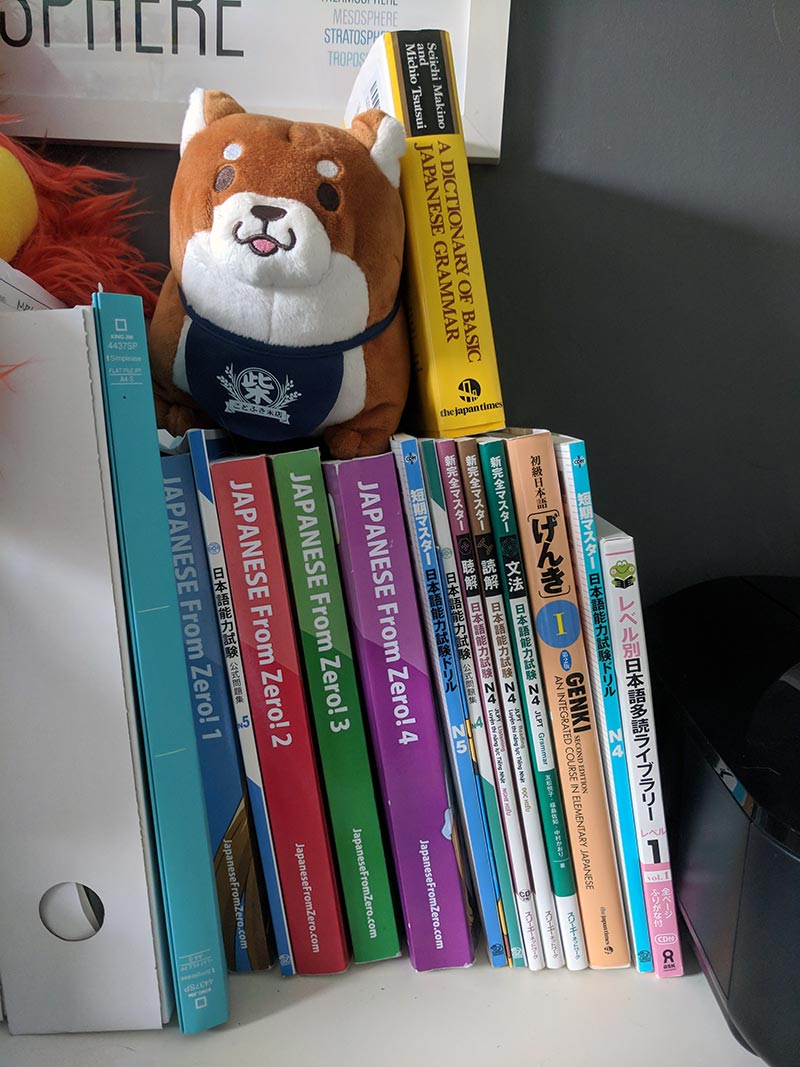
I started off originally with Japanese From Zero!, which I liked because it’s all basically a big workbook with explanations as you go along. You’re encouraged to write a lot, and this helped to reinforce things, but in some parts the pacing lags behind (they gradually introduce the kana, which at a certain point I already knew). It was also pretty cheap back when I didn’t want to invest too much, but that adds up when you buy four! They’ll get you to N5 level and cover some N4, although there are a couple of things that they miss. The books, as you’ll probably see from reviews, are also full of typos from book 2 onwards, which can be pretty offputting.
Genki is the other main textbook I own, which is extremely popular. Genki I will get to you N5ish, and II around N4 (although I don’t own that one). It has a lot of pair work, and I personally found that comments about it being better for a classroom situation resonated. It’s a great textbook, but as a self-studier it wasn’t my primary reference.
At the top you’ll see a Dictionary of Basic Japanese Grammar, which is a really useful resource for looking up grammatical structures and understanding nuance. It’s extensive, and I wouldn’t recommend using it as your primary learning source, but it’s a great thing to have in the background. I use mine a lot.
The rest of the books are things like exam practice papers, graded readers, and other supplementary things for practice rather than learning. I’ve also got some N4 books, but have only really just started using them. You can buy most things from your favourite online generalist bookseller, but the White Rabbit Japan shop is great for getting hold of more niche things. If you happen to be in Japan, I’d recommend taking a trip to Bonjinsha.
Lastly for reading, a very popular recommendation is to start reading manga aimed at children. I started with 「よつばと!」, which has some lovely illustration, I genuinely find funny, and has a great set of community references around. It’s also an amazing feeling to finish an actual physical book (albeit manga), and to really see the progress you’re making.
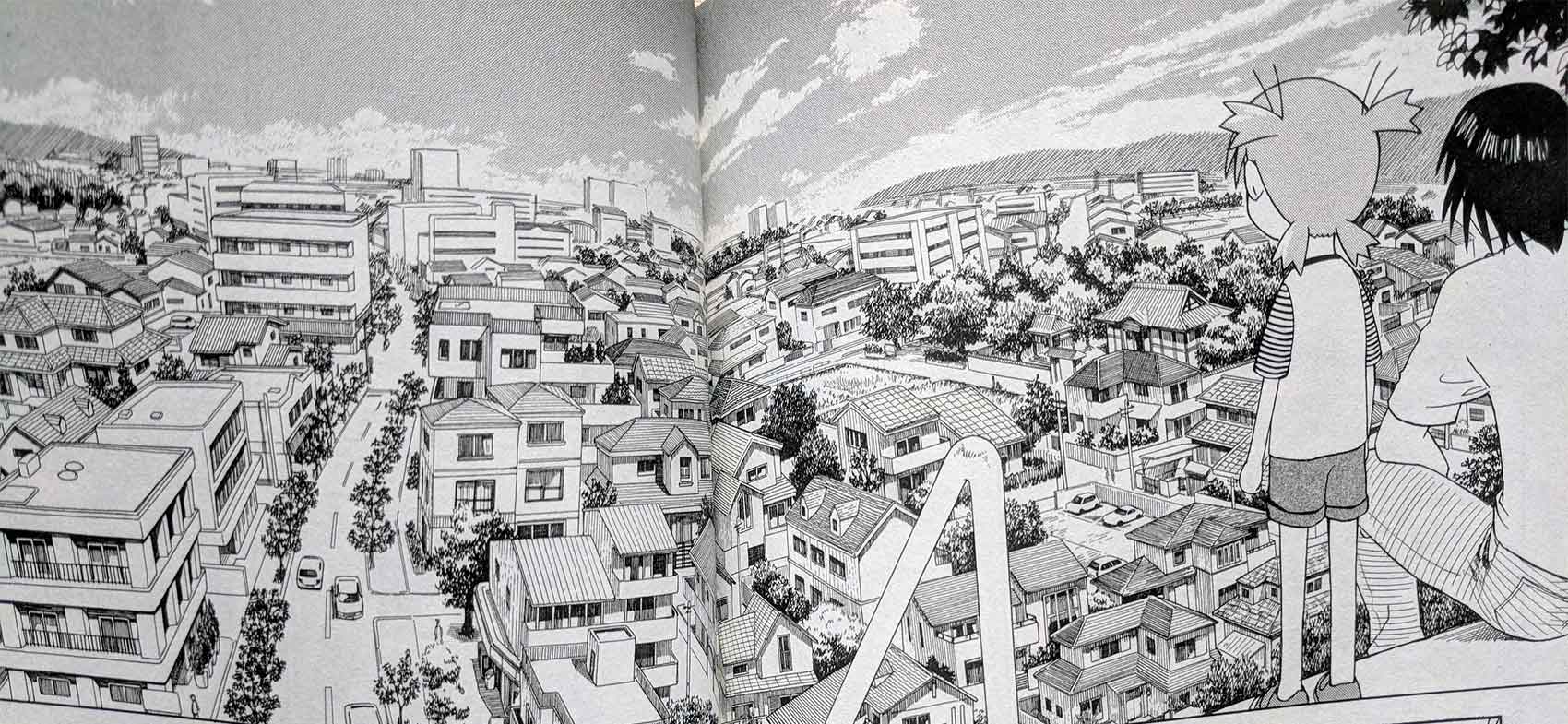
Listening
Whenever I’m in my car I’m still trawling through the Pimsleur series, which gets you to translate small phrases very quickly. It’s not great for learning, but good to test recall and spend time studying in a different way. I don’t drive very much nowadays so am lagging far behind what I know, but I still enjoy having it as extra practice every now and again.
Even more enjoyable is Netflix! When I exercise at home I always watch Japanese TV - Terrace House is my favourite (and there’s so much of it to keep me busy), but there are loads of good options.
Speaking
I was invited to speak at a conference in Tokyo this summer, and as I’d be going on my own it seemed like a great chance to extend my trip and spend some time learning. I did a ton of research into different options for tutors and language schools, but settled on Coto Academy because of the way that they structured their programmes. It was also in a great location for my trip, and offers flexible attendance so that I could drop in for a couple of weeks (some others are more geared around Japanese residents who study full-time). I did two weeks of half-day classes and thoroughly enjoyed my time there, so much so that I’m hoping to be able to return at some point.
Notes
Finally, even if you have a workbook, I’d strongly recommend making your own notes. This could be online, but I’d really found that writing things by hand and illustrating notes has really helped concepts to stick.
Online tools
Vocab
Whilst you’ll pick up vocab from textbooks and reading, I don’t personally tend to find that it sinks in just from reading. To help me with this, I use Anki, which is a free, extremely powerful spaced repetition review tool. It’s also well-known as having what’s possibly the worst user experience in the world, and being just awful to work with. There are also some emerging contenders, like kitsun.io which I keep meaning to try, but Anki does the job for now.
Kanji
Even at the lowest JLPT level you need to know a little bit of kanji, and generally you’ll probably start picking up bits here and there naturally. For this, by far my favourite thing is WaniKani, again by the wonderful Tofugu people. Working on a similar approach to their kana guides, this uses the idea of often joyfully silly mneumonics to help the kanji stick in your mind. I’ve found it incredibly effective, but more than that it’s fun. Many people remark that they get too involved in WaniKani to the detriment of their other studies. I’m completely guilty of this, and paused it for a couple of months around my exam, but I’ve embraced the fact that I find kanji really interesting, even if it’s not necessarily in line with my overall goal of speaking more. This will give you some vocab, but it’s intended to reinforce the kanji rather than to be a tool on that front. Levels 1-3 are free, and I highly recommend you give it a go.
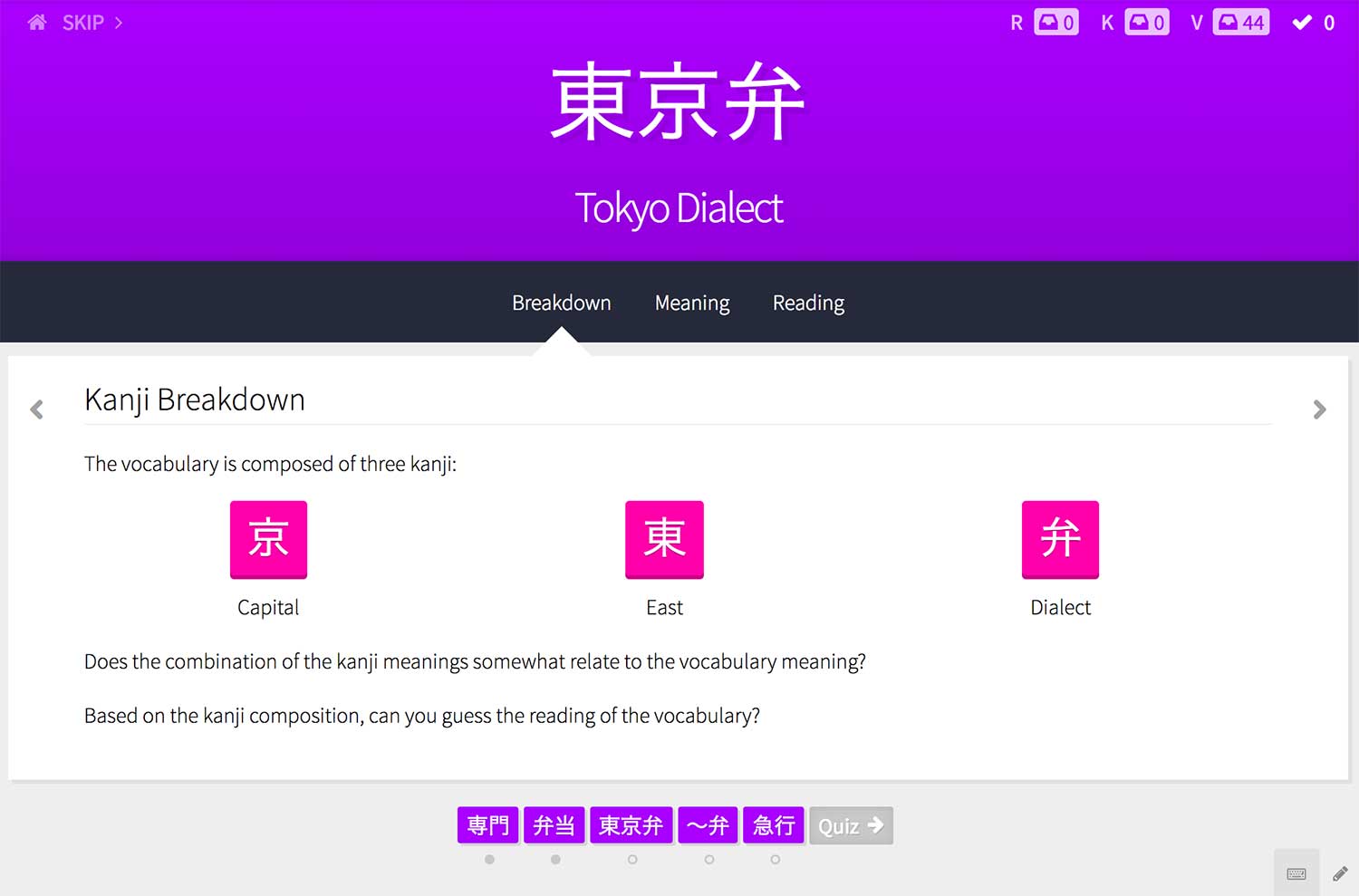
Speaking
Speaking is definitely my weakness, as whilst I can read every day I just don’t have anyone to speak to. This is completely at odds with my goals, and to help balance that I’m intending to start online conversation classes at the next point when my work is a bit more predictable. I’ll update this post if I later recommend any particular services.
Other sites and apps
There are absolutely tons of things out there, and I’m not even going to mention all of the things that I’ve ever used because we’ll be here all day. Instead, here are some notable ones that you may want to check out.
Courses
In general, I’ve found that I’m not a huge fan of app-based learning. However, that said, if you’re looking for some quick and general exposure to what Japanese is like as a language these kinds of apps are also a very low-effort way to get a bit of a feel for that.
I finished Duolingo’s Japanese course very soon after it launched, and to be honest I don’t recommend it for learning. I don’t think the format works at all for teaching, and frequently found myself just ‘pattern matching’ rather than understanding what I was doing.
Another contender that I worked through was Lingodeer. I found this a bit better than Duolingo, probably because it actually included explanations for the concepts. It’s pretty repetitive, and again isn’t the best teacher, but is a decent enough reinforcement option.
Lots of people love Memrise. I’ve tried, but I just can’t use it. Whilst Anki’s UX is brutalist and retro, this is another level of confusing to my brain.
References
Finally, something a bit different from the above. you start to look for resources, some people swear by Tae Kim’s guide and even just use this (as opposed to a textbook). This doesn’t work for me as I’ve found that I needed the workbook exercises and more of a hand-holdy pace, but I go back to this site all the time as a reference and it’s definitely been a huge help.
Cooljugator is one of many conjugation sites. Very useful when you’re starting to learn a new verb form and want to check something.
Practice
If you’re thinking about taking an exam, there are some sample questions on the JLPT Let’s Try Sample Questions! page to help you check whether you’re around the right level.
Another option on this front is the J-CAT, widely used by people online to check their progress. It’s a bit clunky from modern web standards, and also reflects the old JLPT grading so beware of this, but is good practice.
For reading, the NHK news network provides News Web Easy, which is intended to provide real news with simplified language.
Routine
Putting it all together, if I’m working from home my routine typically aims for around 30 minutes to an hour of study in the morning, coupled with the same amount of exercise and Japanese Netflix. If I’m away, it’s more a case of whatever I can fit in.
On any day I aim to at least:
- Run through my Anki vocab
- Do a little bit of grammar study
- Do WaniKani reviews throughout the day
That doesn’t always happen, but I always do something, every day.
My progress
Aside from passing the exam, my progress was most noticeable between my January trip to Japan and the one in July. I made sure to put myself in as many conversational situations as possible, including restaurants with no English spoken/English menu, going for dinner with some friends where we spoke almost only Japanese, and generally chatting to people where possible. I was by no means anywhere near fluent, and still struggle with confidence, but I was so pleased by the leap in interactions. My reading’s a ton more extensive, faster, and to be honest it always feels like a bit of a superpower when you can read and understand something.
Japanese is one of the most enjoyable parts of my days, and I’m excited to see how much better I can get over the next 6 months and beyond.
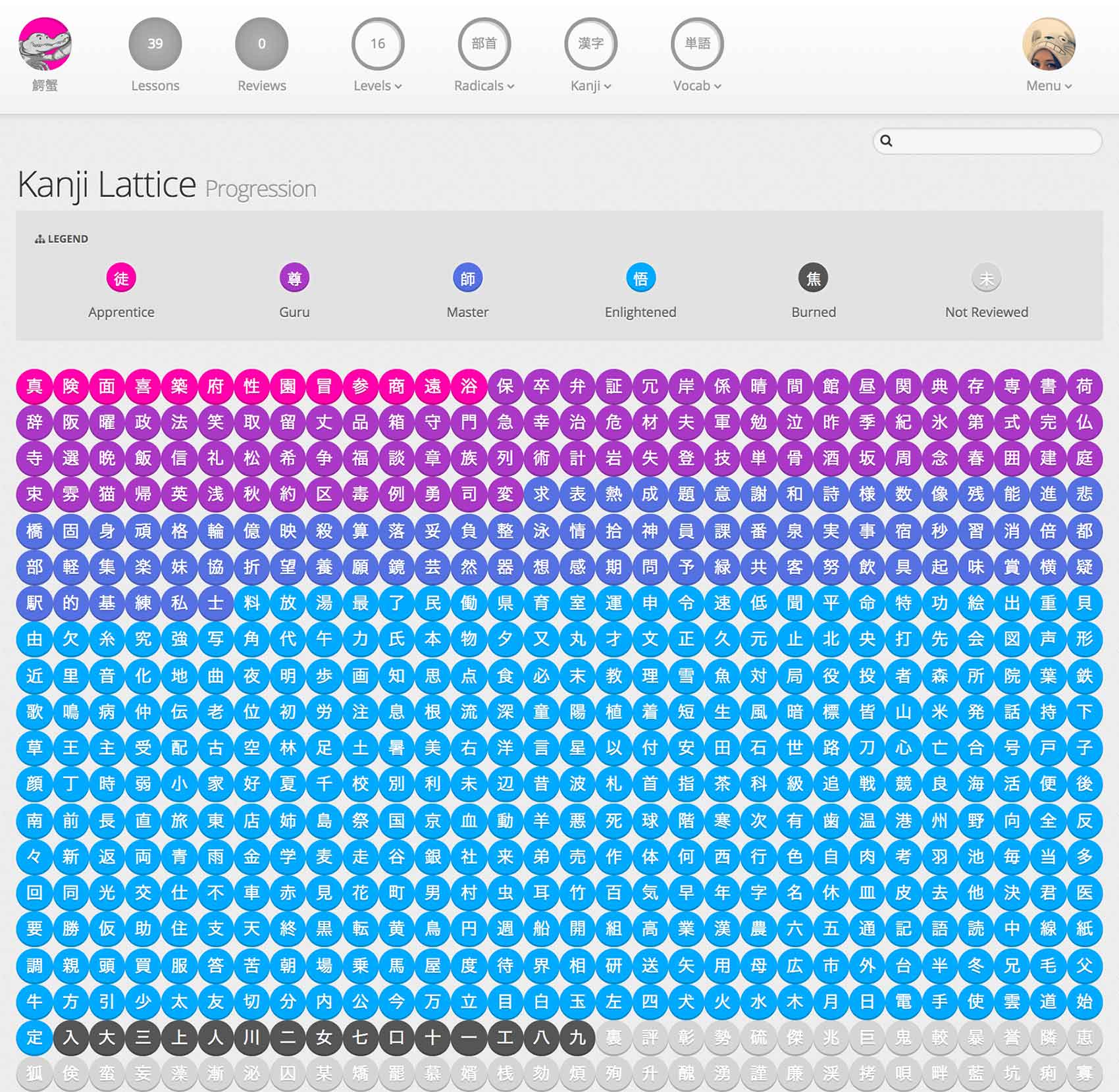
I hope that this proves useful to anyone who’s interested. If you have any questions please feel free to get in touch!
Read more from the blog
Back in time:
Japan, January '18 (part two) - EVO
Forward in time:
Thinking about permissions on the web
 Sally Lait
Sally Lait